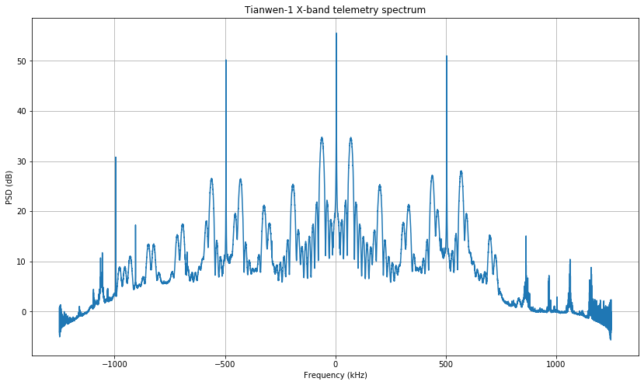A few days ago, Achim Vollhardt DH2VA shared with me some recordings of the lander+ascender combo of Chang’e 5 with the 20m antenna at Bochum observatory, which is operated by AMSAT-DL. The recordings were made on 2020-12-02, while the lander+ascender combo was still on the lunar surface collecting samples (see this tweet by Scott Tilley VE7TIL for the detailed mission timeline). The successful reception of Chang’e 5 by Bochum was announced by AMSAT-DL in Twitter.
The recordings that Achim made are the following:
- Recording of the low data rate telemetry at 8463.7 MHz for some 15 minutes at 6:00 UTC. This frequency was in ground-lock at that time, as shown by the telecommand loopback at +/-8kHz from the main carrier (there are several telecommand packets being transmitted, plus the usual idle telecommand subcarrier)
- Five recordings of a high-speed signal at 8495 MHz. The recording was done at 21:10 UTC, has a length of 5 minutes, and is split in five files due to a constraint of 2GB in the size of the recorded files.
In this post I look at the telemetry decoded from these recordings.
